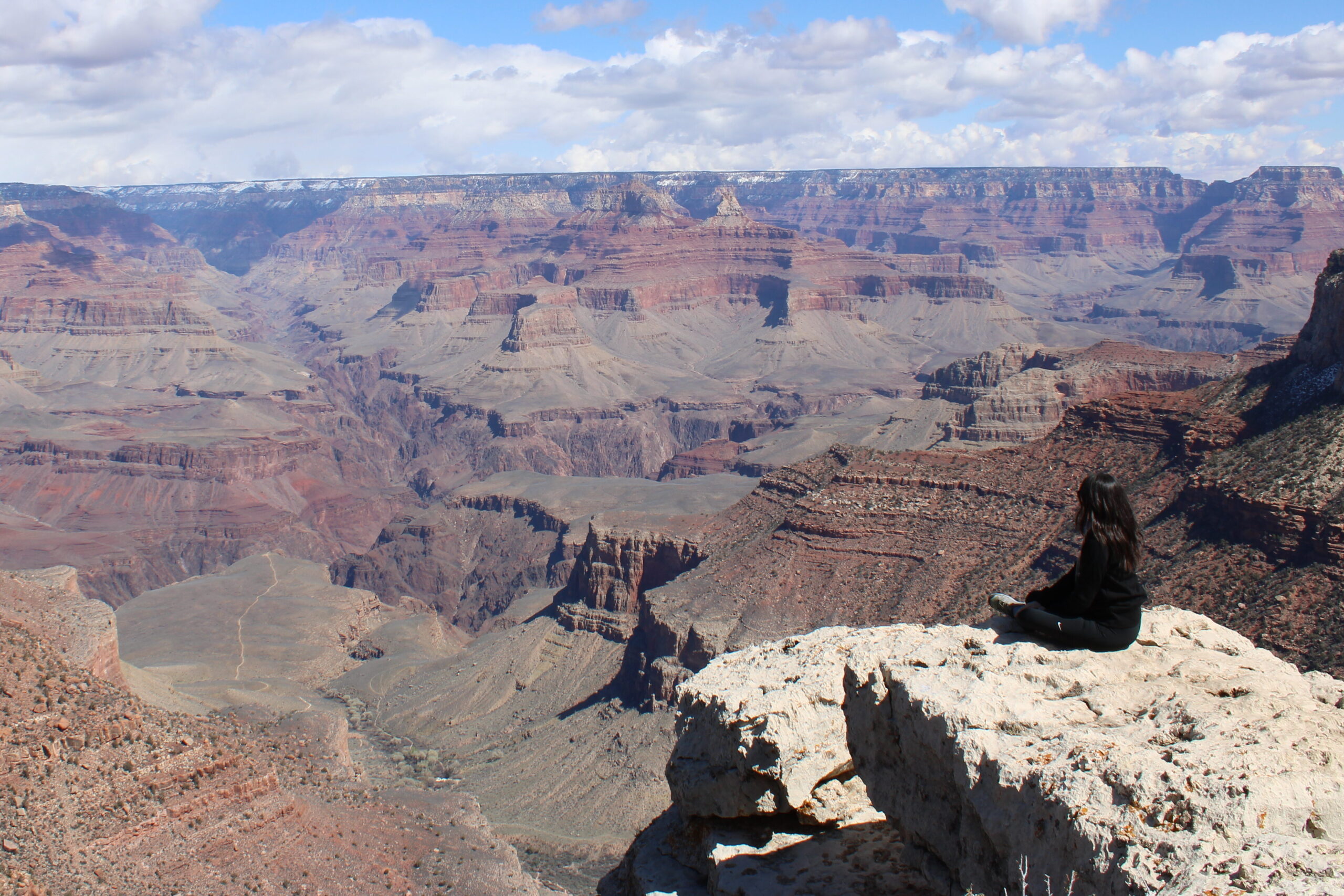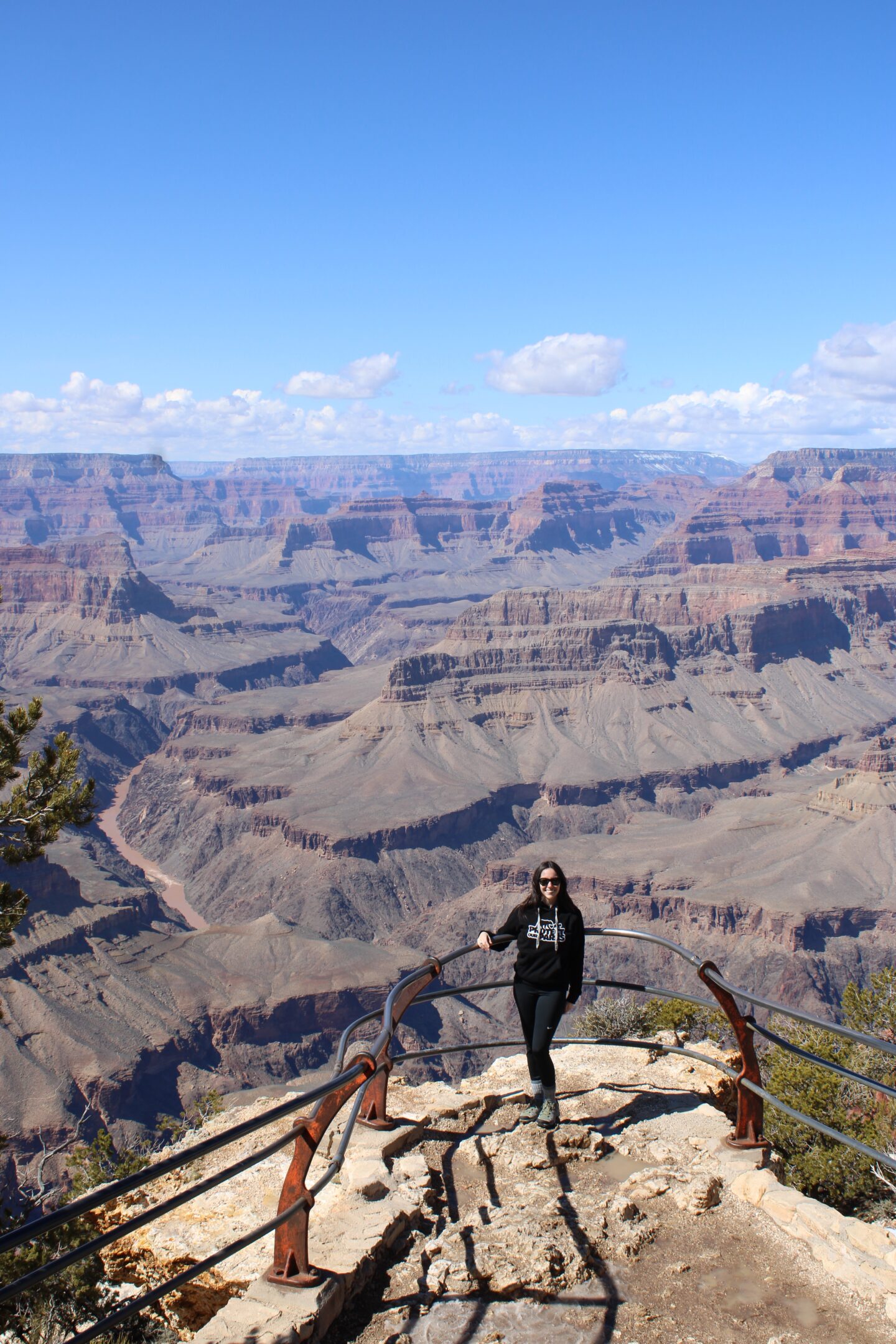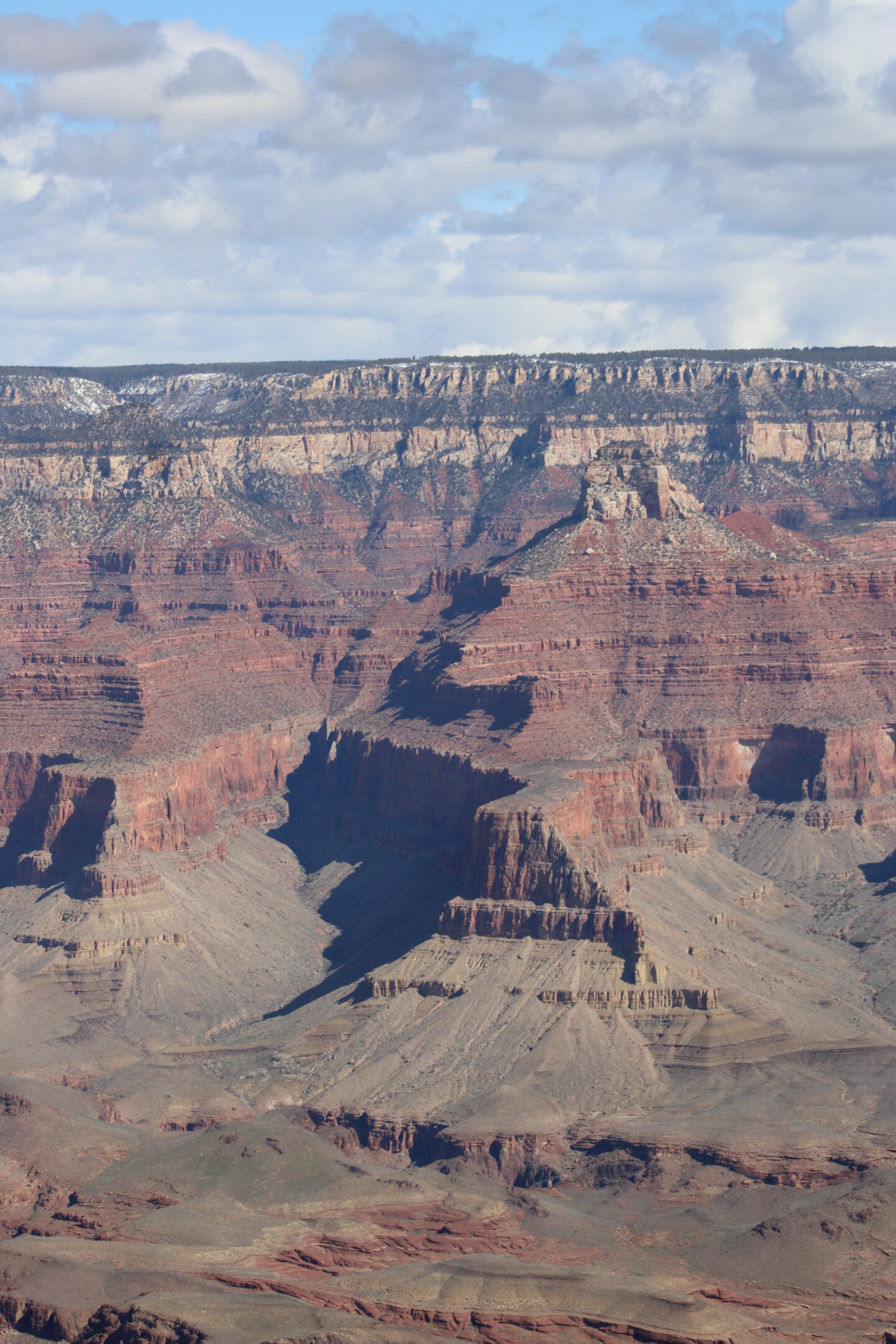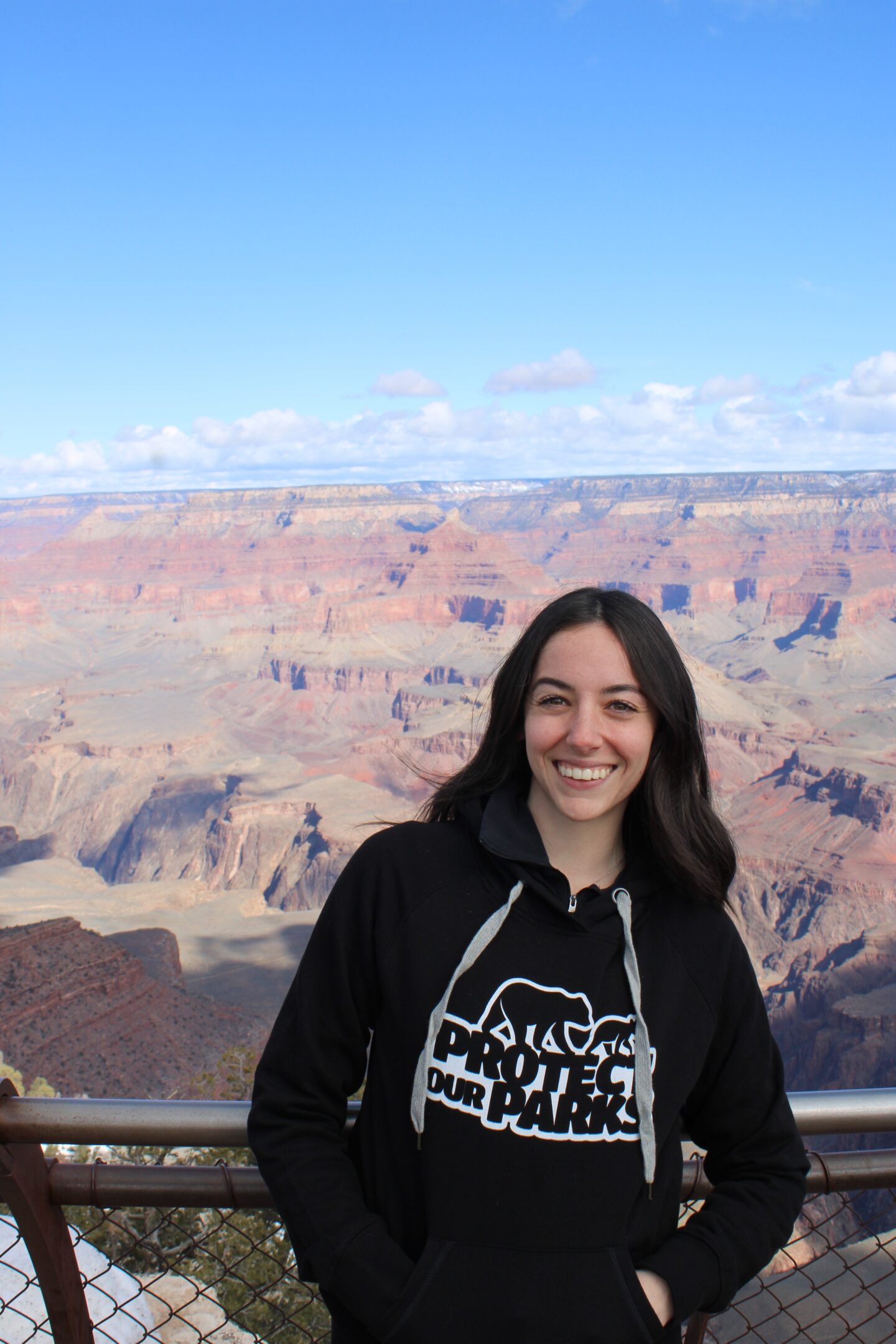THE ULTIMATE GUIDE TO GRAND CANYON NATIONAL PARK

Welcome to the awe-inspiring realm of Grand Canyon National Park, a natural wonder that stands as a testament to the forces of nature and the passage of time. Enveloping 277 miles of the Colorado River’s course, the Grand Canyon offers visitors an unparalleled spectacle of breathtaking vistas, vibrant colors, and profound geological history. This ultimate guide will lead you through all the essential information and unforgettable experiences the park has to offer.
WHAT MAKES THE GRAND CANYON SO SPECIAL?
The Grand Canyon is a true marvel of the natural world, boasting unparalleled geological significance and stunning beauty. Its immense size, approximately 1 mile deep, up to 18 miles wide, and 277 miles long, presents visitors with a humbling and unforgettable experience. The various rock layers, each representing millions of years of Earth’s history, have been carved by the Colorado River over millions of years, resulting in an intricate and mesmerizing landscape.
HOW WAS THE GRAND CANYON FORMED?
The formation of the Grand Canyon is a testament to the power of geological processes. Over millions of years, the Colorado River relentlessly carved through layers of rock, exposing over two billion years of geological history. Forces such as erosion, uplift, and tectonic activity all contributed to shaping this magnificent wonder.
WHERE IS THE GRAND CANYON LOCATED?
Grand Canyon National Park is situated in the northwestern part of Arizona, USA. The South Rim, the most visited and accessible area, is about 60 miles north of the town of Williams, Arizona. The North Rim, less visited and more remote, is approximately 21 miles south of Jacob Lake, Arizona.
The nearest major airport to the Grand Canyon is Flagstaff Pulliam Airport (FLG), located in Flagstaff, Arizona. It is approximately 80 miles (about a 1.5 to 2-hour drive) from the South Rim of the Grand Canyon. Flagstaff Pulliam Airport serves as a convenient gateway for travelers flying into the region to visit the Grand Canyon.
Another option is the McCarran International Airport (LAS) in Las Vegas, Nevada. It is about 270 miles (approximately a 4.5 to 5-hour drive) from the South Rim of the Grand Canyon. While it is a further distance, Las Vegas may offer more flight options and could be a viable choice for those planning to combine a Grand Canyon visit with a trip to Las Vegas.
Keep in mind that if you plan to visit the North Rim of the Grand Canyon, it is more remote, and the nearest airport is St. George Regional Airport (SGU) in St. George, Utah, which is about 207 miles away (approximately a 4-hour drive).
RESERVATIONS AND ENTRY FEES
As traveling to national parks has increased significantly since covid, more and more parks are starting reservation systems. Fortunately, the Grand Canyon is not one of them! Phew!
Entry fees are still required to go into the park. The fee for standard vehicles is $35 (or $30 for motorcycles) and is valid for seven days. If you want to enter the park on a bicycle or by just walking in, the cost is $20 per person.
If you’re a local Arizonian and like to visit this park often, an annual pass can be purchased for $70. The most popular pass is the America the Beautiful – The National Parks and Federal Recreational Lands Pass ($80), which gives you access to all of the national parks in the U.S. (If you visit three parks in one year, the pass pays for itself!)
Don’t forget — there are certain days throughout the year when you can visit any national park for free.
PLACES TO STAY IN GRAND CANYON NATIONAL PARK
Grand Canyon offers various accommodation options, ranging from historic lodges within the park to campgrounds and hotels in nearby towns. Staying within the park allows you to fully immerse yourself in its beauty and enjoy the mesmerizing sunrise and sunset views.
CAMPGROUNDS
- Mather Campground (South Rim): Located near the Grand Canyon Village, Mather Campground is the largest and most popular campground in the park. It offers over 300 sites and is open year-round. Reservations are highly recommended, especially during peak seasons.
- Trailer Village (South Rim): This campground is designed for RVs and trailers and offers full hookups, including water, electric, and sewage connections. It is also located near the Grand Canyon Village.
- Desert View Campground (South Rim): Situated near the Desert View Watchtower, this smaller campground offers about 50 sites. It operates on a first-come, first-served basis and is typically open from mid-April to mid-October.
- North Rim Campground: This campground is located on the North Rim of the Grand Canyon and offers a more secluded and peaceful camping experience. It is open from mid-May to mid-October and usually operates on a first-come, first-served basis.
- Tuweep Campground (North Rim): For those seeking a remote and rugged camping experience, Tuweep Campground is a primitive camping area located on the North Rim. It requires a high-clearance vehicle to access, and visitors must be well-prepared for self-sufficiency.
- Phantom Ranch (Bottom of the Canyon): Phantom Ranch offers a unique lodging experience within the canyon. It features cabins and dormitories and can be accessed via hiking or rafting. Reservations are required and can be challenging to secure due to high demand.
LODGING OPTIONS
- El Tovar Hotel (South Rim): This historic hotel is one of the most iconic and luxurious accommodations at the Grand Canyon. It offers elegant rooms with stunning canyon views and is located near the Grand Canyon Village.
- Bright Angel Lodge (South Rim): Situated right on the rim of the canyon, Bright Angel Lodge provides rustic cabins and historic lodge rooms. It’s a great option for those seeking a more authentic and traditional experience.
- Kachina Lodge (South Rim): This lodge offers comfortable rooms with canyon views and is located near the Grand Canyon Visitor Center and Bright Angel Trailhead.
- Thunderbird Lodge (South Rim): Similar to Kachina Lodge, Thunderbird Lodge provides cozy rooms with canyon views and is conveniently located near the Grand Canyon Visitor Center and Bright Angel Trail.
- Maswik Lodge (South Rim): Maswik Lodge offers modern rooms and is situated in a wooded area near the Bright Angel Trailhead.
- Yavapai Lodge (South Rim): This lodge offers comfortable rooms and is located within walking distance of the Grand Canyon Visitor Center and Yavapai Point, offering spectacular canyon views.
- Phantom Ranch (Bottom of the Canyon): As mentioned earlier, Phantom Ranch provides a unique lodging experience at the bottom of the canyon. It features rustic cabins and dormitories and can be accessed via hiking or rafting. Reservations for Phantom Ranch are highly competitive and need to be made well in advance.
BEST TIME TO VISIT GRAND CANYON NATIONAL PARK
The Grand Canyon is open year-round, and each season offers a unique experience. Spring and fall are popular times to visit due to mild weather and fewer crowds. Summer can be crowded but offers longer daylight hours. Winter provides a tranquil and serene atmosphere, but some areas might be inaccessible due to snow.
THINGS TO DO IN GRAND CANYON NATIONAL PARK
The Grand Canyon is the mecca of endless fun and activities. From hiking, to horseback riding, to kayaking, there is something for everyone at the Grand Canyon.

HIKING
- Bright Angel Trail:
- Duration: A popular day hike is to Indian Garden and back, which is about 9.5 miles round trip. However, the trail continues to Plateau Point, extending the hike to approximately 12 miles round trip.
- Skill Level: Moderate to Strenuous. While the trail is well-maintained, hikers must be prepared for a steep descent and a challenging uphill return.
- Highlights: Stunning panoramic views of the canyon, the Colorado River, and a beautiful oasis called Indian Garden, which provides a restful spot for hikers.
- South Kaibab Trail:
- Duration: The hike to Cedar Ridge and back is around 3 miles round trip. For a longer hike, consider going to Skeleton Point, which is approximately 6 miles round trip.
- Skill Level: Moderate to Strenuous. The trail is steep and exposed, so hikers should be cautious and well-prepared.
- Highlights: Spectacular views along the trail, including Ooh-Aah Point and panoramic vistas at Cedar Ridge or Skeleton Point.
- Rim Trail:
- Duration: The length of the Rim Trail varies based on the section you choose to hike. It stretches for about 13 miles along the South Rim, but you can select shorter segments.
- Skill Level: Easy. The trail is mostly flat and paved, making it accessible for all ages and abilities.
- Highlights: Multiple overlooks offering incredible views of the canyon, including Mather Point, Yavapai Point, and Hopi Point.
- Hermit Trail:
- Duration: The hike to Santa Maria Spring (approximately 7 miles round trip) or Dripping Springs (approximately 9 miles round trip) are common options.
- Skill Level: Strenuous. The trail is challenging, with steep descents and ascents and some exposed sections.
- Highlights: Solitude and impressive vistas of the inner canyon, as well as unique geological features like Hermit Rapids on the Colorado River.
- Grandview Trail:
- Duration: The hike to Coconino Saddle is around 2.5 miles round trip, while the trek to Horseshoe Mesa is approximately 6.8 miles round trip.
- Skill Level: Strenuous. This trail is steep, rugged, and demanding, especially on the return ascent.
- Highlights: Panoramic views of Horseshoe Mesa and breathtaking sights of the canyon’s layered rock formations.
ADDITIONAL HIKES
- North Kaibab Trail to Coconino Overlook:
- Duration: Approximately 4.4 miles round trip.
- Skill Level: Moderate to Strenuous.
- Widforss Trail:
- Duration: Around 10 miles round trip.
- Skill Level: Moderate.
- Cape Royal Trail:
- Duration: A short, easy walk of about 0.6 miles round trip.
- Skill Level: Easy.
- Canyon Overlook Trail (North Rim):
- Duration: About 1 mile round trip.
- Skill Level: Easy
SCENIC DRIVES AND VIEWPOINTS
If you’re not up for a hike, no problem! Take a scenic drives and see some amazing viewpoints!
- Hermit Road: Follow this 7-mile road along the South Rim, stopping at viewpoints for incredible vistas. Viewpoints include:
- Pima Point: Enjoy fantastic panoramic views of the canyon and the Hermit Basin from this viewpoint.
- Hermits Rest: At the end of Hermit Road, you’ll find Hermits Rest, a historic structure designed by architect Mary Jane Colter. It’s a lovely place to relax and take in the surroundings.
- Desert View Drive: An awe-inspiring 25-mile route with several viewpoints and the historic Desert View Watchtower.
- Trailview Overlook: This viewpoint offers a glimpse of the Bright Angel Trail as it winds its way down into the canyon. It’s a great spot to watch hikers making their way along the trail.
- Maricopa Point: At Maricopa Point, you’ll be treated to stunning panoramas of the canyon and the Colorado River. It’s an excellent place to capture breathtaking photographs.
- Powell Point: Named after the famous explorer John Wesley Powell, this viewpoint provides picturesque vistas of the canyon and its colorful rock formations.
- Hopi Point: One of the most popular viewpoints, Hopi Point offers expansive views and is a favorite spot for watching sunrise and sunset.
- Mohave Point: (PICTURED RIGHT) From Mohave Point, you can witness the dramatic change in the landscape as the canyon narrows and deepens.
- The Abyss: As the name suggests, The Abyss offers an impressive view of the steep cliffs and seemingly bottomless depths of the canyon.


Mather Point: Mather Point is one of the most iconic and popular viewpoints on the South Rim of the Grand Canyon. Mather Point is easily accessible, and a short walk from the parking area leads visitors to the rim, where they are met with jaw-dropping views. It is an excellent spot to witness sunrise and sunset, as the changing light illuminates the canyon walls and enhances the stunning colors
ALTERNATE ACTIVITIES
- Mule Rides: Embark on a mule ride to venture into the canyon with a different perspective.
- Skywalk: The Skywalk at Grand Canyon West is a world-famous glass bridge that extends over the edge of the Grand Canyon, providing visitors with a thrilling and unique experience
- Rafting: Experience the Colorado River up close through a guided rafting tour.
- Stargazing: Witness the stunning night sky at one of the park’s designated stargazing areas.
WHAT TO BRING TO GRAND CANYON NATIONAL PARK?
- Plenty of water
- Snacks and meals (if not dining in the park)
- Sturdy, comfortable hiking shoes
- Sunscreen, hat, and sunglasses
- Layered clothing to adapt to changing temperatures
- Camera to capture the breathtaking moments
CAN I BRING MY DOG TO GRAND CANYON NATIONAL PARK?
Pets are allowed on the rim trails but are not permitted below the rim or on park shuttle buses. Make sure to keep your dog leashed and carry enough water for them during your visit.
IS VISITING THE GRAND CANYON WORTH IT?
Without a doubt, visiting the Grand Canyon is an experience of a lifetime. Its unmatched beauty, geological significance, and diverse activities make it a must-visit destination. Whether you’re an adventure seeker, a nature lover, or a history enthusiast, the Grand Canyon has something magical to offer everyone.

